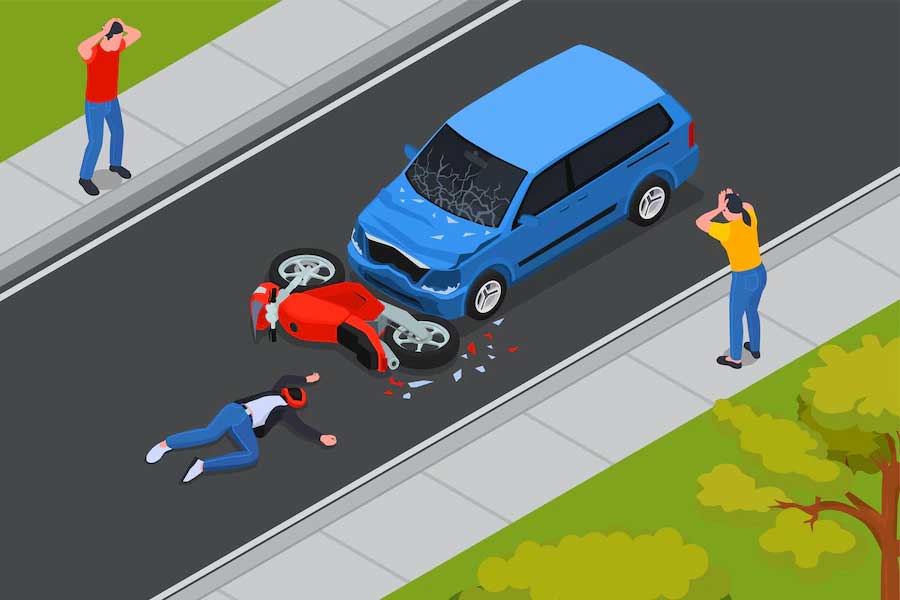How to prove a repetitive trauma case?
7066931124 • November 7, 2022
The Illinois Workers Compensation Act
permits a recovery for all work traumas, including those which occur gradually and over time. The injured worker or the best repetitive trauma lawyers
may file a repetitive trauma claim for cumulative trauma disorders in Illinois.
Under the Illinois Workers Compensation statute, if you are diagnosed with a repetitive trauma injury which occurred gradually over time in the course of your employment, you or your Illinois workers compensation lawyer should follow the following process to develop the medical and job activity evidence in your particular case:
1. Obtain a medical report or letter from a doctor with a specific diagnosis of your medical condition.
2. Determine if the diagnosed medical condition is associated with common medical conditions of repetitive trauma injuries. Common diagnosed medical conditions caused by repetitive trauma are carpal tunnel syndrome, epicondylitis, ulnar neuropathy, cubital tunnel syndrome, rotator cuff injuries, bicep tendon injuries, tendon injuries, entrapment syndromes, and many others.
3. Prepare an accurate and detailed job description illustrating the work activity performed over the period of your employment. If the employer has a job description, you should determine whether the description is detailed and accurate. An outline of your work history and the jobs you have performed must be included. Get a co-worker who can testify your description is accurate.
4. Determine and specify in your job description whether the job activity performed contains risk factors of sufficient degree and duration to cause or aggravate the condition.
5. Highlight the risk factors in your job description. The risk factors include repetitive work activity, awkward joint posture, repetitive motion, forceful grip, forceful pinch, direct pressures, excessive vibration, repetitive flexion and extension, heavy weight and others.
6. Exclude non occupational causes of cumulative trauma such as thyroid disease, acute wrist fractions, rheumatoid arthritis or ask the doctor if you work activity aggravated your condition.
7. Present the job descriptions detailing your work activity and risk factors to you doctor and ask him for a causation opinion. This can be by an entry to your medical records or a causation statement in a letter.
The key to proving a repetitive trauma case is an accurate and detailed job description with a causation opinion from you doctor that establishes the work activity is of sufficient degree and duration to contribute to cause the condition. Note that the causation analysis in repetitive trauma only requires the work activity be a contributing cause. It is not necessary to prove the work was the sole cause, the proximate cause, the primary cause, or a major cause — it is sufficient if the work activity is a factor in contributing to the condition.
If you have any questions on the procedure to prove an Illinois Workers Compensation claim for repetitive trauma, contact experienced workers compensation repetitive trauma lawyers. Ron D. Coffel is among the best repetitive trauma lawyers in Illinois and has had successful recovery for thousands of injured workers with cumulative traumas.
Under the Illinois Workers Compensation statute, if you are diagnosed with a repetitive trauma injury which occurred gradually over time in the course of your employment, you or your Illinois workers compensation lawyer should follow the following process to develop the medical and job activity evidence in your particular case:
1. Obtain a medical report or letter from a doctor with a specific diagnosis of your medical condition.
2. Determine if the diagnosed medical condition is associated with common medical conditions of repetitive trauma injuries. Common diagnosed medical conditions caused by repetitive trauma are carpal tunnel syndrome, epicondylitis, ulnar neuropathy, cubital tunnel syndrome, rotator cuff injuries, bicep tendon injuries, tendon injuries, entrapment syndromes, and many others.
3. Prepare an accurate and detailed job description illustrating the work activity performed over the period of your employment. If the employer has a job description, you should determine whether the description is detailed and accurate. An outline of your work history and the jobs you have performed must be included. Get a co-worker who can testify your description is accurate.
4. Determine and specify in your job description whether the job activity performed contains risk factors of sufficient degree and duration to cause or aggravate the condition.
5. Highlight the risk factors in your job description. The risk factors include repetitive work activity, awkward joint posture, repetitive motion, forceful grip, forceful pinch, direct pressures, excessive vibration, repetitive flexion and extension, heavy weight and others.
6. Exclude non occupational causes of cumulative trauma such as thyroid disease, acute wrist fractions, rheumatoid arthritis or ask the doctor if you work activity aggravated your condition.
7. Present the job descriptions detailing your work activity and risk factors to you doctor and ask him for a causation opinion. This can be by an entry to your medical records or a causation statement in a letter.
The key to proving a repetitive trauma case is an accurate and detailed job description with a causation opinion from you doctor that establishes the work activity is of sufficient degree and duration to contribute to cause the condition. Note that the causation analysis in repetitive trauma only requires the work activity be a contributing cause. It is not necessary to prove the work was the sole cause, the proximate cause, the primary cause, or a major cause — it is sufficient if the work activity is a factor in contributing to the condition.
If you have any questions on the procedure to prove an Illinois Workers Compensation claim for repetitive trauma, contact experienced workers compensation repetitive trauma lawyers. Ron D. Coffel is among the best repetitive trauma lawyers in Illinois and has had successful recovery for thousands of injured workers with cumulative traumas.

For a disease to be recognized as an occupational disease under the Illinois Occupational Disease Act , the connection of the disease to the workplace is proved by establishing a link between the exposure to the alleged disease causing substance and the work activities of the contracted worker. The best Illinois workers compensation and occupational disease lawyers will know that there is a higher incidence or frequency of disease contraction and disorders in certain occupations. The disease or illness, in higher incident type employments are considered “germane” to certain types of workers in this occupations. What follows is a list of some occupational diseases; Coal workers pneumoconiosis . This obstructive lung disease is coming among underground coal miners who are exposed to dusty conditions in the coal mines. Meat cutters tendon disorders . These are common upon meat cutters who must us various joint postures in cutting meat. Electricians tendon disorders, nerve entrapments, trigger fingers, joint dysfunction, and asbestos exposures. Pipe fitters and industrial plumbers, tendon disorders, asbestos exposures, and chemical exposures to compounds and glue substances. Firefighters, EMT, and first responders : post traumatic stress disorders, infectious disease exposures from emergency treatment. Hearing loss and tinnitus is common among factory workers and among workers who are exposed at work to loud noise of sufficient level and duration. In 2010, a new rare disease of bronchialitis obliterates (cement lung) was recognized as an occupation disease among workers who inhaled fumes of popcorn butter flavoring. Asbestos exposure is a known cause of lung diseases. Chemical exposures are a known cause of asthma and lung diseases and skin diseases such as dermatitis. Cancer and other lung diseases are common in workers exposed to asbestos. There is no specific limitation on what diagnosed disease constitutes an occupational disease under Illinois law. If you have contracted a disease and suspect it may have been caused by exposures at work, then follow the steps in our section “What to do if you contract an occupational disease.” Ron D Coffel is a peer reviewed workers compensation lawyer that has been awarded the distinction of leading lawyer that regularly handles Illinois workers compensation and occupational disease claims in Illinois.

Generally, the employee must file a workers compensation claim within 3 years after the injury, death or disablement, or within 2 years of the last payment of temporary total disability of a medical bill, whichever is later. In the event of minority, the statute does not start until the minor reaches the age of 18. A disability may toll the statute to extent it beyond these dates. The Illinois Administrative Code establishes different deadlines for some specific conditions. Asbestos exposure must be filed within 25 years of the last date of exposure. If the injury is fatal, the employee's representative must file within three years of the death, or within two years of the last date of payment of compensation.

The Workers Compensation Act requires the employer to pay for all medical care that is causally related to the injury that resulted in the claim, including: Any care that is required to diagnose, relieve, or cure the effects of the injury; Any first aid, and/or emergency treatment required as a result of the injury to the employee; All medical, surgical, and hospital expenses that are incurred by the employee in the course of curing or relieving the employee of the effects of the injury; Any treatment, instruction, or training required to rehabilitate the injured employee physically, mentally, or vocationally, including maintenance costs and incidental expenses.

Temporary total disability is the period of time beginning with the injury and ending when the employee reaches maximum medical improvement (MMI). MMI occurs when the employee is as far recovered or restored to his or her previous condition as the injury will allow. You are entitled to payment of TTD for the duration of the temporary total disability.







Share On: